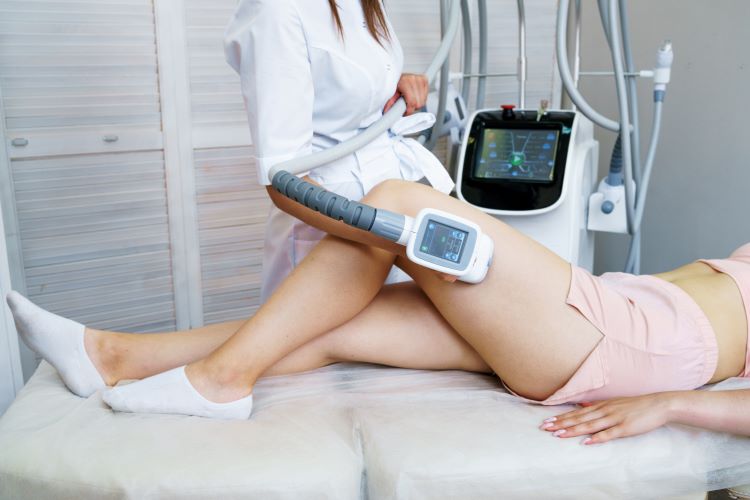Discover the Science and Benefits of Laser Fat Removal for a Sculpted Body
Laser fat removal has emerged as a popular non-invasive cosmetic procedure for individuals seeking body contouring without the downtime associated with traditional surgery. This innovative technology uses controlled laser energy to target and reduce stubborn fat deposits in specific areas of the body. As more people explore alternatives to liposuction, understanding how laser fat removal works, its benefits, and what to expect during treatment becomes essential for making informed decisions about body sculpting options.

Modern cosmetic technology has revolutionized the way people approach body contouring and fat reduction. Among these advancements, laser-based treatments have gained significant attention for their ability to target localized fat deposits with minimal invasiveness. These procedures appeal to individuals who maintain a healthy lifestyle but struggle with areas resistant to diet and exercise. Understanding the science behind these treatments, their applications, and the recovery process helps potential candidates set realistic expectations and determine if this approach aligns with their aesthetic goals.
What is Laser Fat Removal and How Does It Work?
Laser fat removal, also known as laser lipolysis, is a minimally invasive procedure that uses thermal energy to break down fat cells beneath the skin. During treatment, a small laser fiber is inserted through tiny incisions into the targeted fat layer. The laser energy heats and liquefies fat cells, which are then naturally eliminated by the body’s lymphatic system over several weeks. This process also stimulates collagen production, which can lead to skin tightening in the treated area. Unlike traditional liposuction, laser fat removal typically requires only local anesthesia and involves less tissue trauma. The procedure generally takes between one to two hours depending on the treatment area size. The laser’s precision allows practitioners to sculpt specific body contours while minimizing damage to surrounding tissues. Most devices operate at wavelengths specifically designed to target fat cells while preserving nerves, blood vessels, and connective tissue.
Who Can Benefit from Laser Fat Removal and What Areas Can Be Treated?
Ideal candidates for laser fat removal are individuals at or near their target weight who have localized fat deposits that resist traditional weight loss methods. This procedure is not designed as a weight loss solution but rather as a body contouring tool for specific areas. Common treatment zones include the abdomen, flanks, thighs, upper arms, chin, and neck. People with good skin elasticity tend to achieve better results, as the skin can naturally contract after fat reduction. Candidates should be in overall good health, non-smokers, and have realistic expectations about outcomes. Individuals with certain medical conditions, including liver disease, bleeding disorders, or active infections, may not be suitable candidates. Pregnant or breastfeeding women should postpone treatment. The procedure works best for those seeking subtle to moderate improvements rather than dramatic transformations. Multiple sessions may be necessary for larger areas or to achieve desired results. Consultation with a qualified practitioner is essential to determine candidacy and create a personalized treatment plan.
What to Expect During and After Your Laser Fat Removal Session?
The treatment begins with marking the targeted areas and administering local anesthesia to ensure comfort throughout the procedure. Small incisions, typically less than a few millimeters, are made to insert the laser fiber. Patients often remain awake during the procedure and may feel mild pressure or warmth but generally experience minimal discomfort. After the laser treatment, the liquefied fat may be gently suctioned out, or the body may be left to naturally process and eliminate it over time. Following the session, compression garments are usually recommended to support healing and optimize results. Most people can return to light activities within a day or two, though strenuous exercise should be avoided for about two weeks. Mild swelling, bruising, and tenderness in the treated area are normal and typically subside within a week or two. Results become progressively visible as the body eliminates destroyed fat cells, with optimal outcomes appearing after two to three months. Some patients notice immediate improvement due to the removal of liquefied fat during the procedure, while the full contouring effect develops gradually. Maintaining a stable weight through proper diet and regular exercise helps preserve long-term results, as remaining fat cells can still expand with weight gain.
| Provider | Procedure Type | Estimated Cost Range |
|---|---|---|
| Medical Spas | Single Area Treatment | $1,500 - $3,500 |
| Cosmetic Surgery Centers | Multiple Area Treatment | $3,000 - $7,000 |
| Dermatology Clinics | Small Area (Chin/Neck) | $1,200 - $2,500 |
| Plastic Surgery Practices | Large Area (Abdomen) | $2,500 - $5,500 |
Prices, rates, or cost estimates mentioned in this article are based on the latest available information but may change over time. Independent research is advised before making financial decisions.
This article is for informational purposes only and should not be considered medical advice. Please consult a qualified healthcare professional for personalized guidance and treatment.
Comparing Laser Fat Removal to Traditional Methods
When evaluating body contouring options, understanding the differences between laser fat removal and traditional liposuction helps in making informed choices. Traditional liposuction involves physically suctioning out fat through larger incisions under general anesthesia, typically resulting in more dramatic fat reduction in a single session. Laser fat removal offers a less invasive alternative with shorter recovery times and reduced risk of complications. However, it may require multiple sessions to achieve comparable results to traditional liposuction. The laser method provides the added benefit of skin tightening due to collagen stimulation, which can be particularly advantageous for individuals with mild skin laxity. Recovery from laser procedures generally involves less bruising and discomfort compared to conventional liposuction. Cost considerations also differ, with laser treatments sometimes being more affordable for smaller areas but potentially requiring multiple sessions. The choice between methods depends on individual goals, the amount of fat to be removed, skin quality, and personal preferences regarding invasiveness and recovery time.
Maintaining Results and Long-Term Considerations
Achieving optimal results from laser fat removal extends beyond the procedure itself and requires commitment to a healthy lifestyle. While the treated fat cells are permanently destroyed and eliminated from the body, remaining fat cells can still enlarge if significant weight gain occurs. Adopting a balanced diet rich in whole foods, lean proteins, and vegetables supports weight maintenance and overall health. Regular physical activity, including both cardiovascular exercise and strength training, helps preserve body contours and prevents new fat accumulation. Staying well-hydrated aids the body’s natural elimination processes and supports skin health. Most practitioners recommend maintaining weight within a stable range to preserve treatment results long-term. Some individuals may benefit from periodic touch-up sessions to address new concerns or maintain their desired appearance. Understanding that laser fat removal is a body contouring tool rather than a weight loss solution helps set appropriate expectations. With proper maintenance and realistic goals, many people enjoy lasting improvements in body shape and increased confidence in their appearance for years following treatment.




